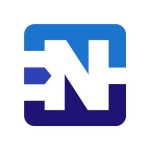Meraki MX is a firewall with wireless capabilities built in. We use the APs in approximately 10 different customer sites.
The most valuable feature of Meraki MX is I can manage the solution from anywhere remotely, I can throttle bandwidth, and create all rules. Additionally, it is secure for our customers.
I have been using Meraki MX for approximately six years.
Meraki MX is a dependable solution.
Meraki MX is scalable. I have the Meraki MX set up from Oklahoma all through several of the big cities in Tennessee and northern Alabama. We use it, and we run it for a particular company for voice-over IP phones. It works well. I don't have any issues with them. We can set up virtual networks, separating data and voice traffic.
Meraki MX firewalls are great for small to medium-sized businesses, but other solutions are better for enterprise-sized companies.
The support from Meraki MX is good. It is easy to get in touch with technical support 24 hours a day, seven days a week. They are responsive and knowledgeable.
I have previously used Barracuda. For larger companies, such as banks and financial institutions, I use Barracuda firewalls. However, they are more complex. You have to have penetration testing. Every year we have penetration testing from external companies to make sure no one can get in because they have federal audits that come in and check banks. Barracuda is the better solution for this purpose, we've had great luck with them. We've always had perfect scores whenever we deploy them and we have external penetration tests. They have a 24-hour day, seven days week support similar to Meraki MX.
Meraki MX is simple to deploy and manage. You only need to plug it in and configure it.
We did the implementation of the solution in-house.
The price of Meraki MX is between $8 and $1,200. Additionally, we typically purchase a three-year enterprise license, and we pay approximately $899 and mark it up a bit.
I would recommend others call us, we can implement the solution for them.
We have three technicians for maintenance, and we all can handle servers, firewalls, and routers. Once we put the Meraki MX in, it doesn't require much maintenance. It has automatic updates and we receive all the firmware updates. Once they're in place, we don't have any issues with them. However, if we do, it's easy to get in and make configuration changes.
I rate Meraki MX a nine out of ten.


















